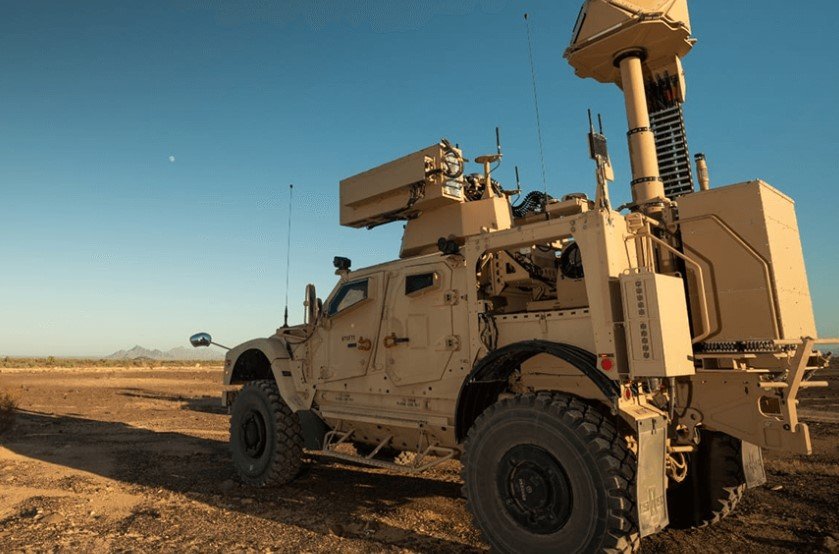The Trump administration has quietly redirected advanced anti-drone technology originally destined for Ukraine to U.S. forces stationed in the Middle East, according to a recent Wall Street Journal report. This move signals growing concern in Washington over potential conflicts involving Iran and Houthi militants in Yemen.
Pentagon Flags Urgent Shift in Weapon Priorities
Last week, the Pentagon sent a confidential note to Congress highlighting the redirection of specialized fuzes—critical components in the Advanced Precision Kill Weapon System (APKWS). These fuzes, designed to protect ground forces against drone attacks, were initially procured under the Biden administration for Ukraine’s defense amid Russia’s drone onslaught.
Defense Secretary Pete Hegseth identified the shift as an “urgent issue,” underscoring the high stakes involved. It’s not every day that Washington pulls back equipment intended for a frontline ally to prioritize its own troops elsewhere.
The decision throws a spotlight on the U.S.’s balancing act between supporting Ukraine against Russian aggression and shoring up its military posture in the Middle East. Given the volatile situation with Iran and escalating Houthi drone activity in Yemen, Pentagon leaders clearly see an immediate threat demanding attention.

Russia’s Drone Warfare Escalates Over Ukraine
Russia’s drone campaign in Ukraine has been relentless. Just days before the Pentagon’s alert, Russian forces launched their largest swarm of attack drones since the full-scale invasion began—472 drones unleashed in a single night on June 1.
Ukrainian President Volodymyr Zelensky shared sobering figures on June 4, stating that over 20,000 drones have been sent toward Ukraine since the start of this year alone. That’s a staggering number, pointing to Russia’s investment in drone warfare as a strategic priority.
And there’s more on the horizon. Ukrainian military intelligence (HUR) warned the Kyiv Independent that Russia is rapidly ramping up production and expanding launch sites. Soon, they anticipate the capability to deploy over 500 long-range drones per night. That’s a game of aerial cat and mouse with deadly stakes.
The Middle East Focus: Why Now?
Why divert such crucial tech now? The answer lies in the shifting geopolitics and the heightened risk of conflict in the Middle East.
U.S. forces in the region face increasing threats from Iranian-backed militias and Houthi rebels, who have been using drones to launch attacks on military bases and shipping routes. Unlike conventional warfare, drones provide a cheap but effective way to strike and disrupt.
The Pentagon’s move suggests that Washington sees the Middle East as a more immediate battleground demanding hardened defenses, especially with tensions simmering around Iran’s nuclear program and proxy conflicts in Yemen.
The stakes are huge: protecting troops, securing oil supply routes, and maintaining regional stability. The anti-drone tech is part of a layered defense system meant to give U.S. forces a fighting chance against these asymmetric threats.
Balancing Aid to Ukraine and U.S. Military Needs
This redirection may raise eyebrows among allies and critics who watch U.S. support for Ukraine closely. After all, Kyiv is locked in a brutal struggle against Russia’s aggression, with drones playing a growing role in the conflict.
Still, the Biden administration had initially secured these fuzes for Ukraine, illustrating America’s commitment to the war effort. The Trump administration’s decision to reallocate them underscores how global military priorities can shift quickly—and sometimes without public fanfare.
Pentagon officials stress this move is about urgency and defense readiness rather than pulling back support for Ukraine entirely. But questions linger about how these kinds of decisions might affect the battlefield balance and diplomatic relations.
What’s Next for Ukraine and U.S. Forces?
Ukraine’s drone war looks set to intensify. With Russia ramping up production, Kyiv’s defenses will need more advanced countermeasures, potentially increasing demands for support from the West.
Meanwhile, U.S. troops in the Middle East are bracing for possible escalation, relying on enhanced tech to counter drone threats from proxies and hostile actors.
It’s a delicate balancing act—providing enough aid to allies while shoring up U.S. military readiness in volatile regions.
For now, the quiet shift of anti-drone technology reflects how unpredictable global conflicts have become. When the threats multiply in different corners of the world, the U.S. must pick its battles—and sometimes, that means changing plans fast.








